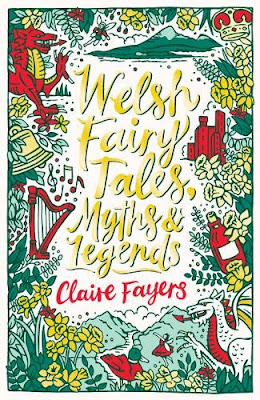CREATIVE SECRETS Claire Fayers
 |
| Claire's latest book Tapper Watson and the Quest for the Nemo Machine |
Tell us about your creative space
I can generally work anywhere as long as it’s quiet. I moved house during lockdown and my new office is a narrow piece of conservatory leading off the kitchen. I have a door to the outside and a little private patio which I love. My best productivity trick was to put a curtain up between me and the kitchen so I can close it if I really don’t want to be disturbed. The other thing that has made a huge difference is my sit-stand desk. I was suffering from a lot of back pain from sitting for too long so now I alternate. I’m writing this standing up.
Oddly I wrote Storm Hound, which is set in the Welsh mountains, while living in the middle of Cardiff and now I’m living in the Welsh mountains I’m writing a novel set in a big city. It seems that wherever I am, my brain wants to be somewhere else!
 |
| Claire's creative space |
What your creative tools?
I used to plunge straight into a draft but my agent likes to see proposals first, so I brainstorm on giant sheets of paper with Sharpies – I like to be big and messy at the planning stage!
Once I’ve got some ideas I use the ‘snowflake method' to draft a one page outline. You basically start with a single sentence, expand that to a paragraph then expand the paragraph to a page. It keeps me focused on the big shape of the story without worrying about the details.
I use Word for the rest of the planning and writing. I have two documents, one for the draft and one for planning notes, and I jump between them. My favourite feature of Word is the combination of headings and the navigation pane. It makes it very easy to hop around the document and change the order of scenes.
I actually find it very hard to stick to a routine and it will vary depending on what I’m working on. I discovered the Writers’ Hour a while back. It’s a one-hour Zoom session starting at 8am in different time zones around the world so you can find the one that suits you best. I’ve been joining that a few times a week and it’s been a great help.
Any particular prompts to get started?
This is my octopus of motivation. It sits on my desk and stares at me with its crocheted eyes until I feel guilty enough to start work. I don’t have much in the way of a starting ritual – usually just a case of making a cup of tea, which I’ll usually forget to drink and then microwave later.
 |
| Claire's octopus of motivation |
Any advice for writers who are trying to get established?
Read everything you can get your hands on and write about the things that excite you. You need to develop a thick skin in this business so protect that creative core of yourself.
Does exercise help your creative process?
Getting out in the fresh air definitely helps. You need to give your mind a rest and have time for ideas to settle. There’s a canal near my house that has the most amazing viewpoint. It takes about 20 minutes to walk there and back which is a perfect break.
 |
| Viewpoint along the canal |
Planner or pantser? Or a bit of both?
I’m more of a pantser. Planning is really not my strength, even though I’ve got better at it with practice. My first book, Voyage to Magical North, was completely made up as I went along. Now I find it helps to have a rough idea of where the story is heading before I get too far into writing.
 |
| Welsh Fairy Tales, Myths & Legends |
Welsh Fairy Tales was interesting as the book was commissioned, which meant I was writing to a brief with a tight deadline and also I was retelling existing stories. After agreeing with my editor which stories I’d tackle, I read them in as many different versions as I could find, then I wrote them on a three day cycle of draft, revise and finish. So on any day I’d have three stories in different stages of completion. Then, once I’d finished the whole collection, I took a week to go back through and do a final edit and proofread.
Find their work at www.fourfooteleven.com
Follow them on Instagram and Twitter
Contact them at illustrators@britishscbwi.org










No comments:
We love comments and really appreciate the time it takes to leave one.
Interesting and pithy reactions to a post are brilliant but we also LOVE it when people just say they've read and enjoyed.
We've made it easy to comment by losing the 'are you human?' test, which means we get a lot of spam. Fortunately, Blogger recognises these, so most, if not all, anonymous comments are deleted without reading.